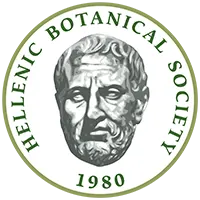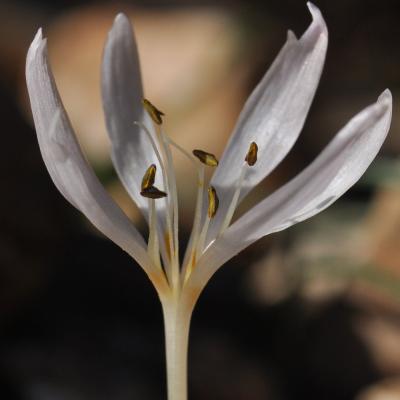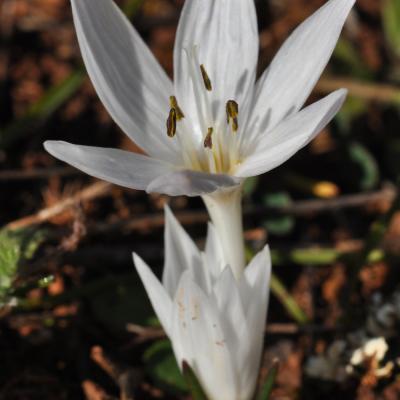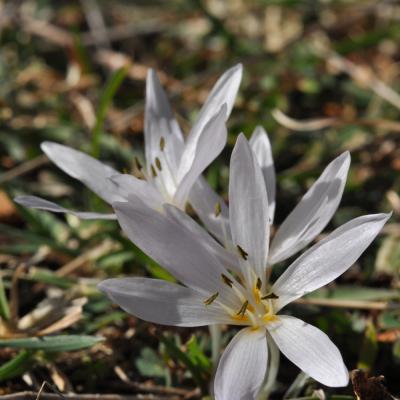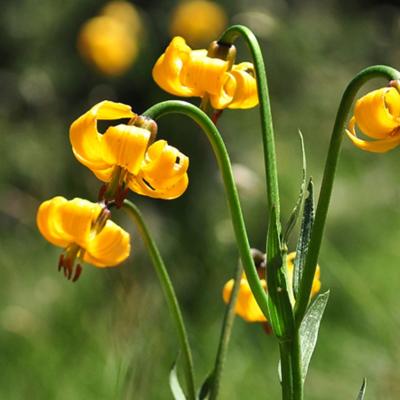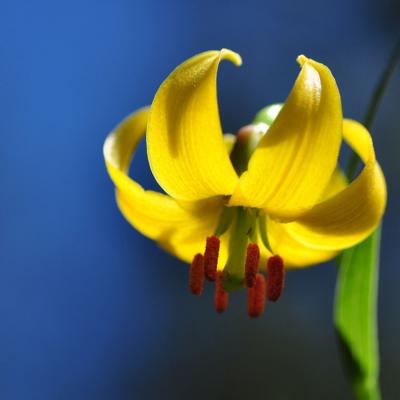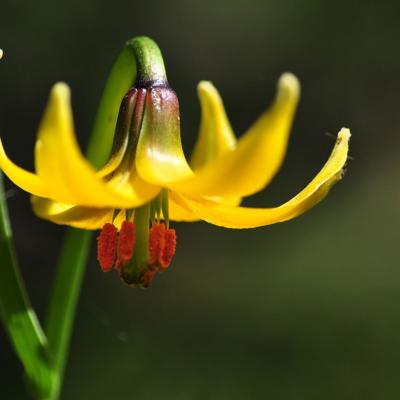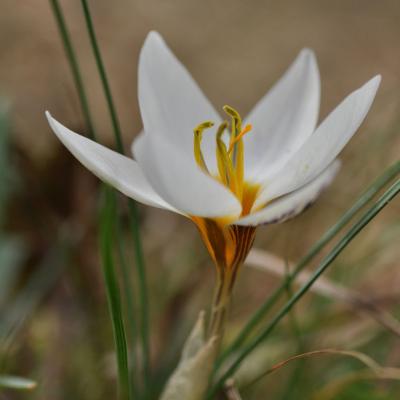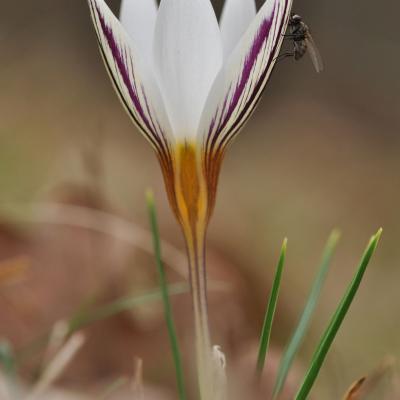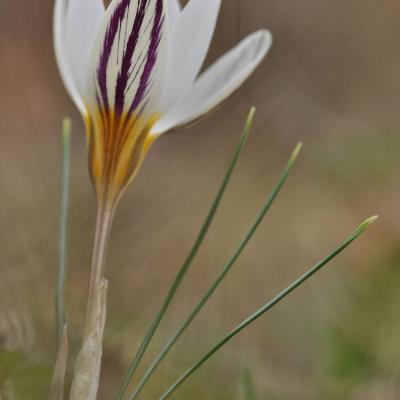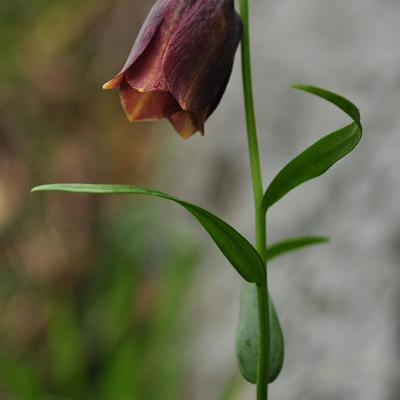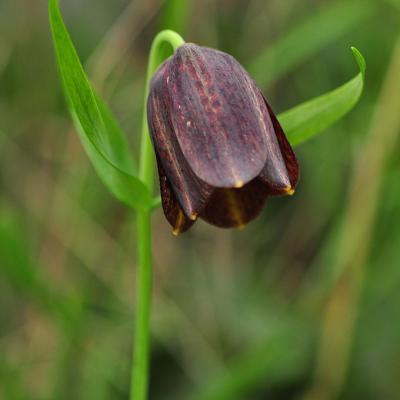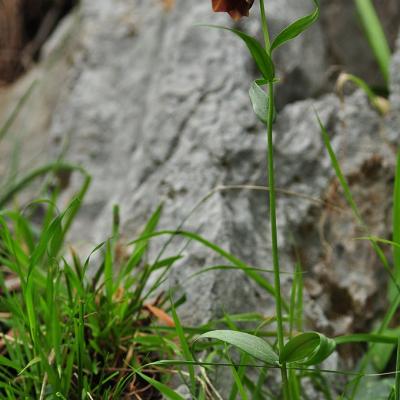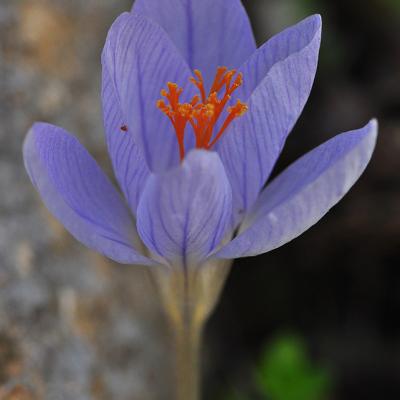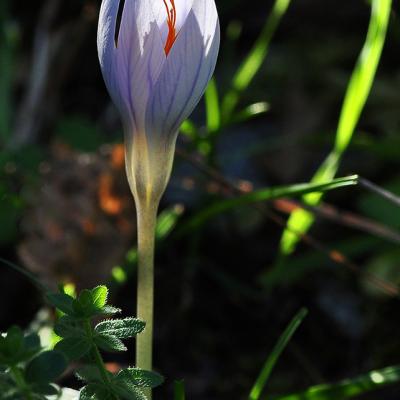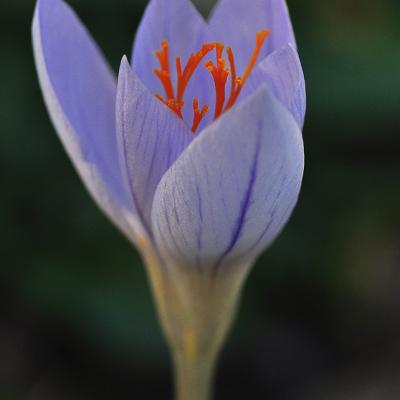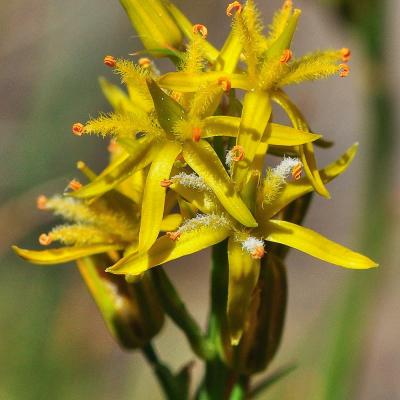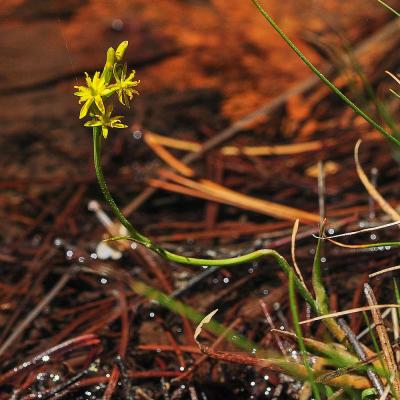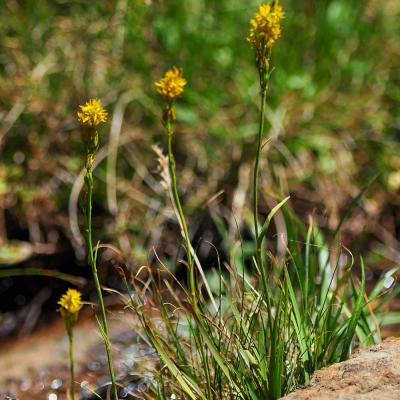Katerina Goula
Colchicum asteranthum was discovered relatively recently in 1999, and was described three years later. So far, it has been found only on Lerkio of Peloponnesus, where its distribution is limited to slopes with southwest to southeastern exposure. This very limited distribution makes Colchicum asteranthum one of the rarest species of the genus Colchicum in Greece.
Lilium albanicum is one of the five representatives of the genus Lilium in Greece and one of the two Greek species with yellow flowers. Its distribution within borders includes Pindos and the mountains of northern Greece, while outside Greece it is located in Albania, Bulgaria and the former Yugoslavia. This impressive plant occurs in meadows and forest openings at high altitudes, usually higher than 1450 m, and can reach up to 2200 m. It blooms in June and July.
Crocus biflorus subsp. stridii is a fairly rare species, Greek endemic, known so far only from the prefectures of Thessaloniki and Xanthi. Its fragrant flowers, of white or purple color, with dark stripes on all three tepala, coupled with the rarity, make it very attractive for collectors, so it is included in the Red Data Book of 1995 with the designation "Vulnerable".
This subspecies flowers with 5-8 leaves during January and February. It grows in open grassy or sandy places, at an altitude of 30-800 m.
The endemic Fritillaria thessala subsp. reiseri occurs in the municipality of Aitoloakarnania. It grows in rocky places, among small shrubs or phrygana, on low altitudes, from sea level to 400 m. Flowering begins around the end of March until April.The subspecies is included in the Red Data Rook of Greece (1995) and is characterized as Vulnerable. Its two small subpopulations are in danger of shrinking due to overgrazing.
Crocus speciosus subsp. speciosus is an autumn flowering crocus, with a scattered distribution in Greece. The species globally occurs in Crimea, Caucasus, Turkey, Iran and the Balkan Peninsula. The westernmost part of the species distribution is Greece, where it forms three small subpopulations. According to the IUCN criteria, the species is ‘Vulnerable’. It is included in the Red Data Book of Rare and Threatened Plants of Greece (2009).
Narthecium scardicum Košanin is a member of Melanthiaceae family. It is balcan endemic, distributed in NW Greece, NE Albania and SW former Jugoslavia, with the locus classicus located in the latter and more specifically on Mt Scardos, from which derives the specific name of the plant. In Greece it is fairly rare, as it can be seen only on two serpentine mountains of Northern Pindos, Mt Smolikas and Mt Mavrovouni, in marshy places by springs and brooks, at an altitude of 1500 to 2100 m. The main flowering period is in July. N.
